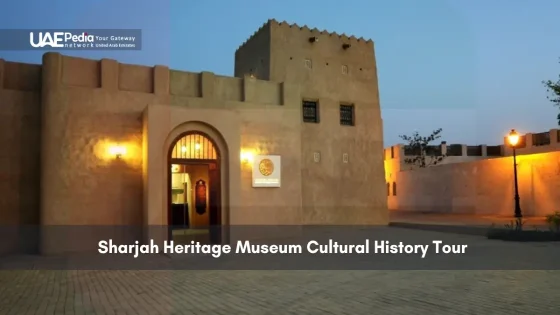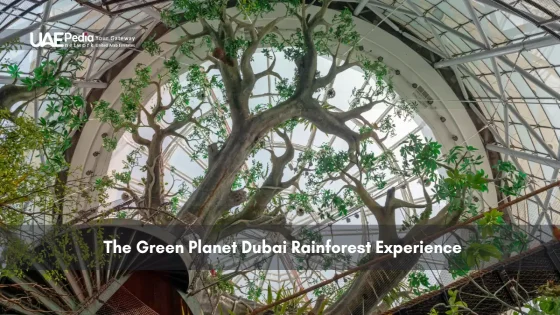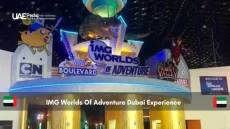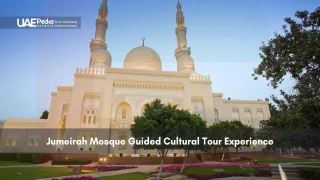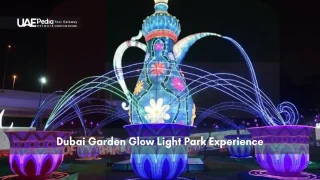What if we told you the UAE’s most captivating stories aren’t found in glass skyscrapers—but in centuries-old textiles, pearl divers’ tools, and coffee pots? Tucked into the Heart of Sharjah, this space isn’t just a collection of artifacts. It’s a doorway to the rhythms of daily life that shaped a nation.
We’re walking through sunlit galleries where embroidered bisht cloaks whisper tales of Bedouin hospitality. Interactive displays decode how families thrived in desert climates, while reconstructed souq stalls let you barter like it’s 1953. Every corner pulses with traditions that still flavor Emirati weddings, meals, and celebrations today.
This guide isn’t about dusty relics. We’ll show you how to:
- Spot hidden symbols in handwoven sadu patterns
- Decode the maritime ingenuity behind pearl diving gear
- Find the courtyard where local storytellers share folklore
Ready to trade elevator pitches for ancestral wisdom? Let’s wander.
Introduction to Sharjah’s Rich Cultural Heritage
Ever wonder how a land of dunes became a tapestry of traditions? We’re standing where desert wisdom meets modern ambition—and the answers are etched into every corner of this vibrant heart sharjah district. Let’s peel back the layers.
“Our grandparents didn’t just survive the desert—they danced with it.”
A Glimpse Into the Region’s Past
Before air conditioning, families thrived using wind towers and shaded courtyards. Bedouin tribes mapped stars for navigation, while coastal communities built dhows from acacia wood. The exhibits here don’t just show objects—they reveal problem-solving genius.
| Then | Now | Connection |
|---|---|---|
| Date palm irrigation | Sustainable farming | Water conservation |
| Handwoven textiles | High-fashion motifs | Pattern symbolism |
| Pearl diving songs | Modern folk festivals | Oral storytelling |
Understanding the Role of Tradition in Today’s Emirate
That coffee pot you’ll see? It’s not a relic—it’s a blueprint. Emirati hospitality still revolves around gahwa rituals, and souq bargaining techniques shape today’s startup culture. As this deep dive into the UAE’s cultural shows, innovation here wears tradition like a well-tailored bisht.
We’ll show you where to spot:
- Moon-phase calendars hidden in jewelry designs
- Desert navigation tricks repurposed for city planning
- Spice trade routes mirrored in today’s shipping hubs
Explore Sharjah Heritage Museum Cultural History
Think Indiana Jones meets your favorite history teacher—except here, the treasures are real, and the lessons come alive. Wander through galleries where every display case holds secrets whispered across generations.
Discovering Authentic Exhibits and Artifacts
That rusty-looking tool? It’s a freed—a pearl diver’s nose clip. Nearby, woven palm-frond baskets reveal how families stored dates. Each item here earned its spot by surviving storms, sun, and time.
Look closer at the embroidery on a child’s dress. Those geometric patterns? They’re coded maps of desert trails. “We don’t just show things—we show how people thought,” a curator once told us.
| Object | Material | Hidden Story |
|---|---|---|
| Diving basket | Palm fibers | Double-layered to prevent pearl loss |
| Silver necklace | Bedouin coins | Worn as savings account |
| Coffee mortar | Ghaf wood | Pounding rhythm = hospitality code |
The Significance of Traditional Displays
Pearl diving gear isn’t just about oysters. The weights divers tied to their feet? They’re math lessons—exact measurements kept them from sinking too fast. Touch replicas of sailcloth to feel how artisans mixed goat hair with palm threads for waterproofing.
Three things most visitors miss:
- Fingernail grooves in wooden spoons (portion control)
- Charcoal marks inside water jars (evaporation tracking)
- Knot patterns on fishing nets (tide calendars)
These objects aren’t behind glass because they’re fragile. They’re here because their stories are too powerful to fade.
Insider Visit: Navigating the Museum Experience
Ready to swap sunscreen for shaded corridors? Let’s map your route through this treasure trove of Emirati wisdom. Morning visits (8:30–11 AM) beat the midday heat and tourist crowds—trust us, you’ll want elbow room to inspect those pearl diving weights up close.
Key Visitor Information and Practical Tips
Slip-on shoes are your allies here—floors alternate between cool tiles and replica sand paths. Pro tip: Grab the laminated map at reception. It highlights AC zones and “don’t-miss” displays like the spice trader’s ledger hidden in Gallery 3.
Plan around these hours:
- Saturday–Thursday: 8 AM–8 PM
- Friday: 4–9 PM (perfect for sunset views from the courtyard)
Exploring the Heart of the Museum in Sharjah
This isn’t just another stop—it’s the best museums in Sharjah experience anchored in the historic district. Taxi drivers know it as “Al Hisn Square”, but follow the scent of frankincense drifting from nearby souqs.
Afterward, duck into the shaded alleyways behind the building. You’ll find artisans crafting silver jewelry using techniques displayed upstairs. Staff often share stories about their grandparents’ roles in preserving these traditions—ask about Ahmed’s great-uncle, the legendary pearl diver!
Embracing Traditional Emirati Life and Artifacts
What if your grandmother’s jewelry box held maps to forgotten oases? That’s the magic waiting in these galleries—where silver necklaces double as survival guides and embroidered hems whisper family sagas.
Stories Woven Into Threads and Metal
Notice the tiny bells on a child’s dress? They weren’t just decorations. “Each jingle helped mothers track toddlers in crowded souqs,” explains Aisha, a docent whose family donated pieces to the collection. The sadu-woven cloak nearby hides symbols marking tribal alliances—a wearable LinkedIn profile from the 1800s.
Household items here crackle with ingenuity. That blackened coffee pot? Its soot patterns reveal how often a host welcomed guests. Clay water jars bear finger-etched tallies tracking moon cycles for planting dates. Every scratch tells a story.
“We didn’t inherit these treasures—we borrowed them from our grandchildren.”
| Artifact | Material | Hidden Message |
|---|---|---|
| Bride’s headdress | Silver threads | Coin patterns = family wealth |
| Spice grinder | Sandstone | Groove depth = recipe ratios |
| Infant’s blanket | Camel wool | Stitch count = birth month |
Women shaped this legacy quietly but powerfully. They stitched dowries into garments, encoded weather wisdom into quilt patterns, and passed down songs while grinding spices. Today, their descendants lead restoration workshops in the museum’s courtyards—keeping stories alive through calloused hands and laughter.
Uncovering the Layers of Emirati History
Imagine holding a pearl diver’s weathered journal—each page etched with saltwater and survival strategies. This is where the Gulf’s heartbeat becomes tangible, through objects that transformed survival into art.
From Pearl Diving to Desert Traditions
That rusted knife in Gallery 5? It’s a mizmar—used to pry open oysters without damaging gems. Nearby, lunar calendars carved into palm trunks show how families timed voyages with tidal patterns. “We didn’t just harvest pearls,” says Rashid, whose grandfather dived until the 1960s. “We harvested time itself.”
Three innovations shaped coastal economies:
- Double-layered diving baskets (prevented losing pearls in currents)
- Camel-skin water bags (self-cooling through evaporation)
- Star maps embroidered on sails (navigation meets needlework)
How Artifacts Reflect a Bygone Era
Desert life demanded MacGyver-level creativity. Touch the replica goat-hair tent—its black stripes aren’t decorative. They’re thermal regulators, expanding in sunlight to create airflow. Even children’s toys had dual purposes: date-pit dice taught math while settling family disputes.
“Every scratch on these tools is a conversation with the past.”
Explore how coastal economies influenced social structures. Silver jewelry wasn’t just adornment—coins sewn into headdresses served as emergency funds during droughts. Women’s woven palm-frond baskets? They’re the original multi-compartment organizers, with sections for spices, threads, and secret messages.
Today’s visitors often pause at the display of indigo-dyed fabrics. The blue hues? More than fashion—they repelled insects during desert crossings. Every artifact here whispers, “Ingenuity isn’t new—we just forgot how to listen.”
Contemporary Perspectives: Connecting Past and Present
What if your smartphone could time-travel? In these galleries, augmented reality meets ancestral wisdom—teenagers scan QR codes beside pearl divers’ tools while grandparents point at displays saying, “We used those!” This isn’t a history lesson—it’s a conversation across centuries.
Threads That Never Fray
Watch visitors pause at the sadu weaving demo. A young designer snaps photos of geometric patterns, muttering, “This’ll kill on Instagram.” Nearby, elders nod approvingly—the same motifs now appear on runway handbags. The palm-frond weaving techniques displayed here? They’re being 3D-printed into lampshades downtown.
| Tradition | Modern Twist | Thread |
|---|---|---|
| Coffee rituals | Specialty café culture | Hospitality codes |
| Navigation stars | GPS apps | Wayfinding logic |
| Weaving songs | Podcast storytelling | Oral history |
“My daughter asked why we don’t just buy baskets,” laughs visitor Sara Al-Mansoori. “Then she tried weaving one—took two hours! Now she gets why grandma insists on repairing hers.”
Tech isn’t replacing traditions here—it’s amplifying them. VR headsets transport you to 1940s pearl camps, while touchscreens decode embroidery patterns. The real magic? Watching kids teach parents how to use the interactive displays.
“We’re not preserving relics—we’re updating the software of our identity.”
As sunset paints the courtyard gold, you’ll spot elders and teens debating over date syrup ice cream. Some arguments never change—like whether camel-milk lattes count as “real” coffee. The answer? “Try both and decide.”
Final Reflections on a Timeless Cultural Expedition
Who knew a single courtyard could hold centuries of wisdom? This space doesn’t just display objects—it stitches together how communities thrived in harsh climates and celebrated in times of plenty. Every woven basket and tarnished coin reveals the quiet genius of daily life.
You’ll leave understanding how pearl divers’ rope knots inspired modern engineering. Or why grandmothers’ embroidery patterns now appear on designer handbags. The real magic? Seeing visitors pause at displays, whispering, “My family used something like this.”
This isn’t about frozen moments. It’s about living threads—the way elders still grind spices with rhythmic precision, or how fishermen recite star maps their ancestors sang. One traveler recently told us, “I came for photos, but left with stories I’ll share at my next dinner party.”
Ready to step into the story? Wander through shaded galleries where the past winks at the present. Then explore the lively lanes outside, where frankincense smoke blends with food truck aromas. Because here, every tradition has a heartbeat—and you’re invited to feel its pulse.
Most visitors spend 1.5–2 hours soaking up the stories here. Pace yourself—the galleries unpack everything from desert survival hacks to intricate jewelry traditions. Pro tip: Don’t rush the “Pearl Diving” exhibit; its immersive soundscapes really pull you into the past!
Absolutely! Families love the hands-on displays, like trying out a traditional coffee grinder or exploring a recreated Bedouin tent. It’s learning disguised as play—perfect for sparking curiosity about Emirati ingenuity.
Scan the QR codes beside key displays! They unlock bite-sized audio clips (in English and Arabic) that dive deeper into stories, like why palm-frond architecture was a desert game-changer or how women’s embroidery patterns signaled tribal identity.
Yes, but keep flashes off to protect delicate textiles and documents. The vibrant hues of antique khanjars (daggers) and handwoven sadu fabrics are Instagram gold—just tag #HeartOfSharjah to join the digital storytelling!
Cleverly! Look for side-by-side displays comparing historic pearl traders’ tools with today’s sustainable aquaculture projects. It’s a nod to how traditions evolve—like swapping camel caravans for hyperloops without losing that entrepreneurial spirit.
If you’re craving insider nuggets, 100%. Local guides decode details you’d miss, like why date storage jars were buried underground or how falconry terms influenced Emirati Arabic. Tours often end with fresh ghawa (coffee)—a perfect cultural cherry on top.
